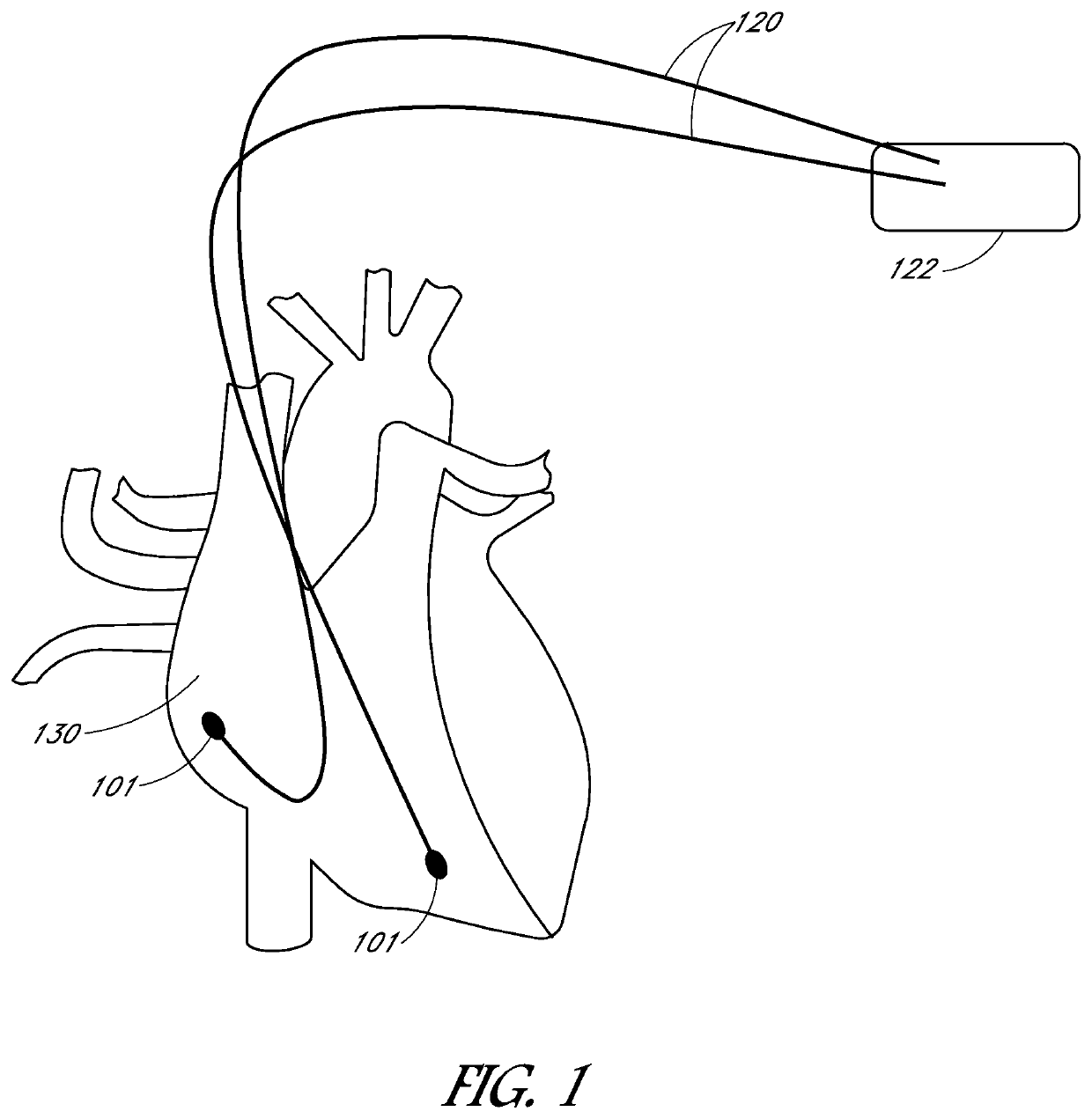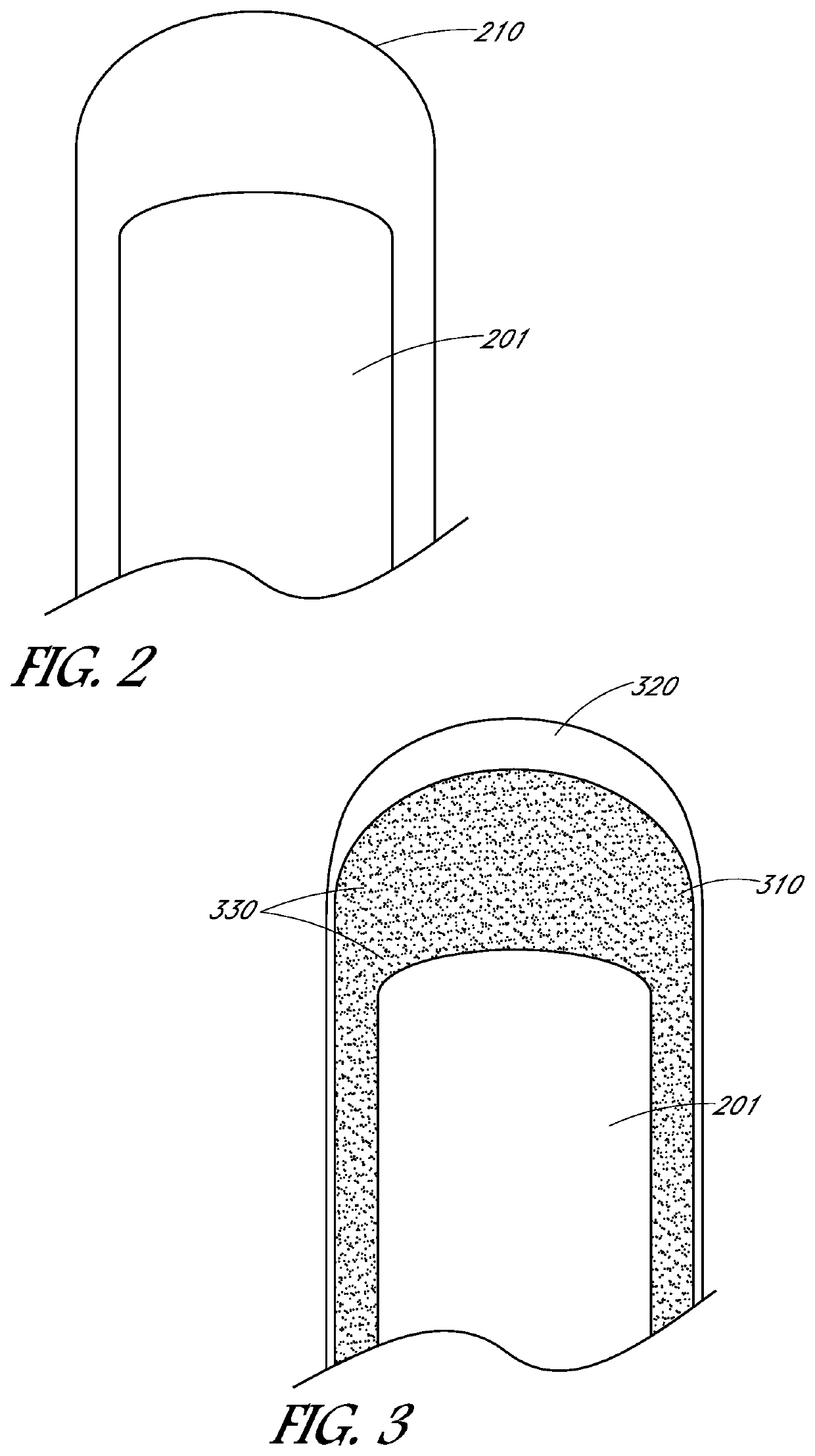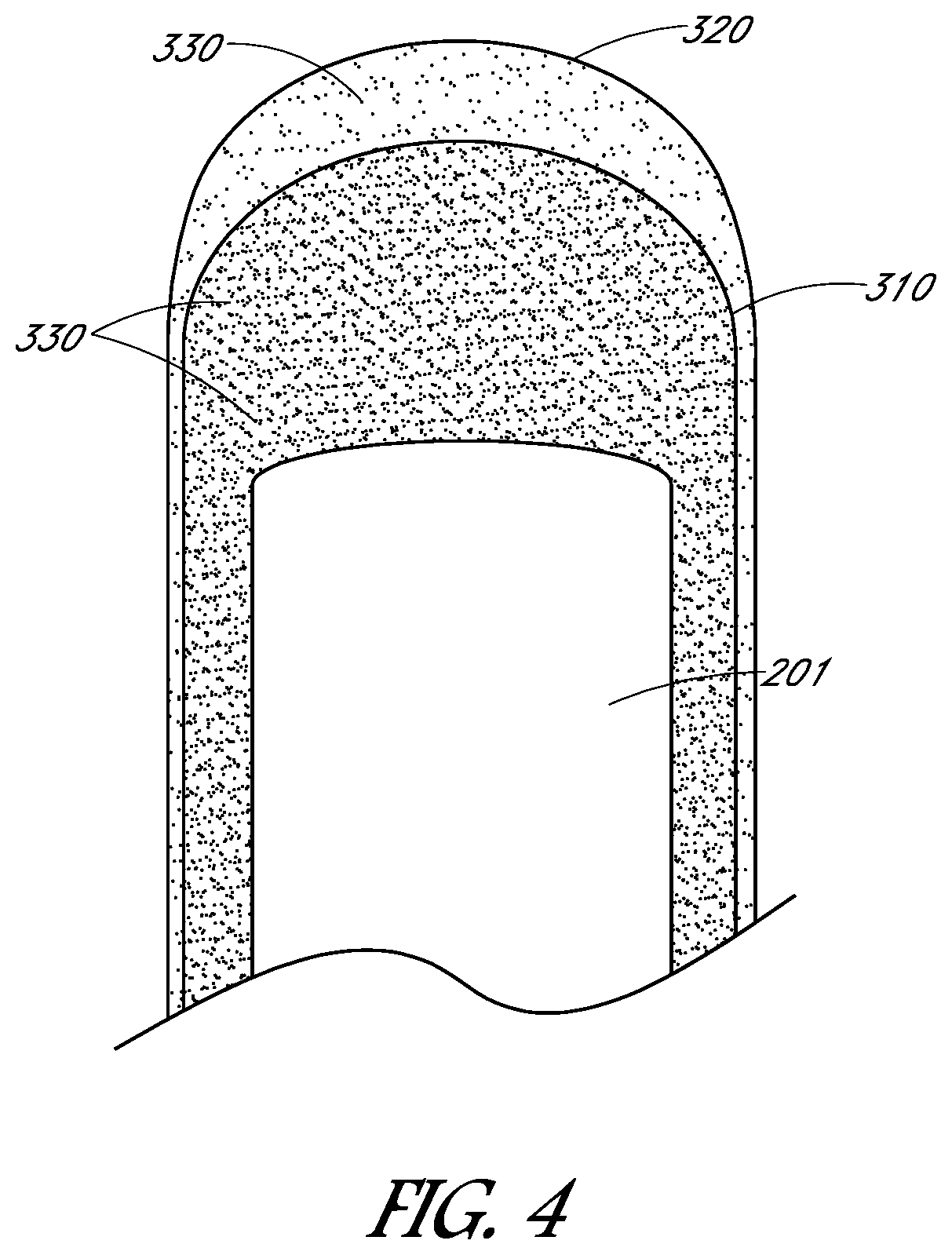Non-fibrotic biocompatible electrode and related methods
a biocompatible electrode and electrode technology, applied in the field of electrodes, can solve the problems of shortening the battery life of the device, necrosis of adjacent myocytes, additional patient complications including death, etc., and achieve the effects of reducing the use of drugs, preventing or reducing the buildup of undesirable tissue, and reducing the use of undesirable tissu
- Summary
- Abstract
- Description
- Claims
- Application Information
AI Technical Summary
Benefits of technology
Problems solved by technology
Method used
Image
Examples
Embodiment Construction
[0026]Combating implantation fibrosis requires a new approach to biomaterials design. Successful development of biomaterials for a pacemaker electrode and / or lead is strongly dependent on its electrical properties and the response to the material-tissue interface.
[0027]Embodiments may include devices, systems, processes, and articles of manufacture relating to conductive, biocompatible electrodes and / or leads. These electrodes and / or leads may eliminate or reduce fibrotic response of tissue upon implantation or contact with tissue. These electrodes and / or leads may be coated. This coating might be a complete or partial coating of a lead or electrode and may vary depending on the application or specific location of placement of the lead or electrode, such as cardiac applications and neural or muscular applications. The coating may eliminate or reduce fibrotic response of tissue upon implantation or contact with tissue but may not reduce the conductive ability of the electrode and / or ...
PUM
| Property | Measurement | Unit |
|---|---|---|
| diameter | aaaaa | aaaaa |
| diameter | aaaaa | aaaaa |
| diameter | aaaaa | aaaaa |
Abstract
Description
Claims
Application Information
 Login to View More
Login to View More - R&D
- Intellectual Property
- Life Sciences
- Materials
- Tech Scout
- Unparalleled Data Quality
- Higher Quality Content
- 60% Fewer Hallucinations
Browse by: Latest US Patents, China's latest patents, Technical Efficacy Thesaurus, Application Domain, Technology Topic, Popular Technical Reports.
© 2025 PatSnap. All rights reserved.Legal|Privacy policy|Modern Slavery Act Transparency Statement|Sitemap|About US| Contact US: help@patsnap.com



